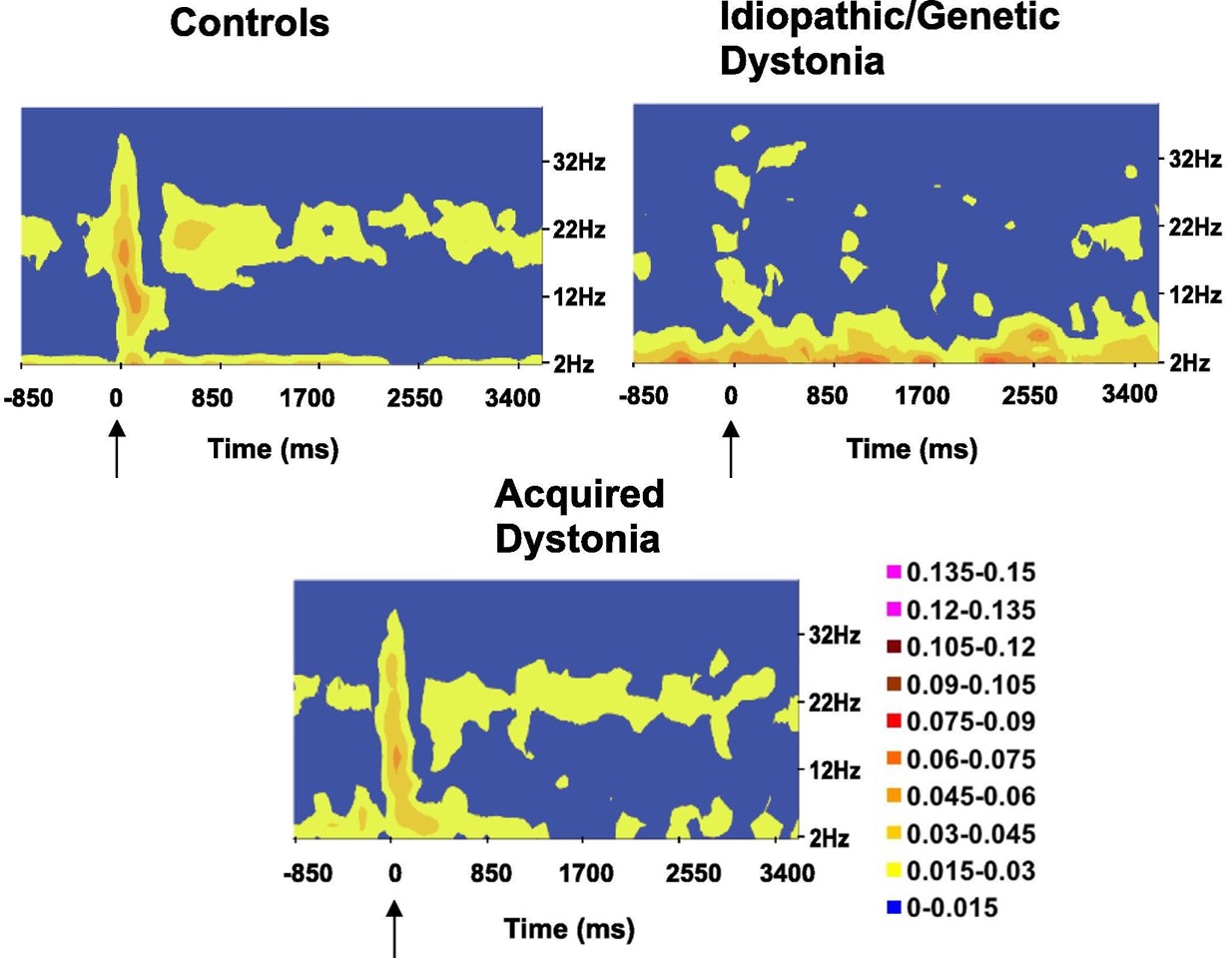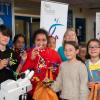Abnormal patterns of corticomuscular and intermuscular coherence in childhood dystonia.
Dystonia is a condition that leads to twisting muscle spasms. Several types of dystonia may occur in children. Here, we show that the way the brain deals with information from the limbs differs between types of childhood dystonia. By understanding how different forms of childhood dystonia come about we may be able to design better therapies.
OBJECTIVE: Sensorimotor processing is abnormal in Idiopathic/Genetic dystonias, but poorly studied in Acquired dystonias. Beta-Corticomuscular coherence (CMC) quantifies coupling between oscillatory electroencephalogram (EEG) and electromyogram (EMG) activity and is modulated by sensory stimuli. We test the hypothesis that sensory modulation of CMC and intermuscular coherence (IMC) is abnormal in Idiopathic/Genetic and Acquired dystonias.
METHODS: Participants: 11 children with Acquired dystonia, 5 with Idiopathic/Genetic dystonia, 13 controls (12-18 years). CMC and IMC were recorded during a grasp task, with mechanical perturbations provided by an electromechanical tapper. Coherence patterns pre- and post-stimulus were compared across groups.
RESULTS: Beta-CMC increased post-stimulus in Controls and Acquired dystonia (p = 0.001 and p = 0.010, respectively), but not in Idiopathic/Genetic dystonia (p = 0.799). The modulation differed between groups, being larger in both Controls and Acquired dystonia compared with Idiopathic/Genetic dystonia (p = 0.003 and p = 0.022). Beta-IMC increased significantly post-stimulus in Controls (p = 0.004), but not in dystonia. Prominent 4-12 Hz IMC was seen in all dystonia patients and correlated with severity (rho = 0.618).
CONCLUSION: Idiopathic/Genetic and Acquired dystonia share an abnormal low-frequency IMC. In contrast, sensory modulation of beta-CMC differed between the two groups.
SIGNIFICANCE:The findings suggest that sensorimotor processing is abnormal in Acquired as well as Idiopathic/Genetic dystonia, but that the nature of the abnormality differs.

2023. Mov Disord, 38(3):423-434.
2023. Neural Comput, 35(9):1481-1528.
